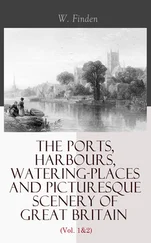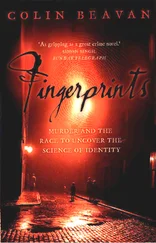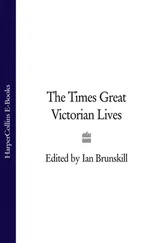CHAPTER 13
181
A week afterwards . . . unrestrained crying.'
Account of Young-man's execution from the
News of the World
of 9 September 1860.
183
On Monday, 24 September . . . quite innocent.
A year later the Home Office, after prolonged wranglings, paid Slack's firm PS700 for its work on the case. See HO 144/20/49113.
187
Mrs Dallimore was a real-life version
. . . The Female Detective
(1864).
Amateur female detectives also appear in Wilkie Collins' 'The Diary of Anne Rodway' (1856) and in
Revelations of a Lady Detective
(1864) by 'Anonyma' (W. Stephens Hayward). This book's jacket shows the lady detective as a dangerously emancipated, sensual creature. She wears a plump red-and-white ribbon round her throat, a hat piled high with flowers, a fur stole and velvet cuffs. She gives the prospective reader a sidelong gaze while lifting her full black coat to reveal the hem of a red dress.
188
'the late Edgar Poe'.
Poe had died, aged forty, in 1849. In life, he suffered from alcoholism, depression and episodes of delirium. The critic Joseph Wood Krutch wrote that Poe 'invented the detective story in order that he might not go mad'.
Edgar Allan Poe: A Study in Genius (1926),
quoted in Peter Lehman's
The Perfect Murder
(1989).
190
'Mr Kent, intriguing . . . disposes of same.'
See
The Letters of Charles Dickens 1859-61 (1997),
edited by Madeline House and Graham Storey.
190
The
Saturday Review . . .
beyond their routine'.
In the
Saturday Review
of 22 September 1860.
191
The idea took hold . . . minds of our countrymen.'
In
Once a Week,
13 October 1860. The author pointed out that, by this argument, few murders should take place in sunny southern Europe, which in fact had many violent deaths.
191
A freak storm had hit Wiltshire . . . Saville Kent had died.
The natural historian and meteorologist George Augustus Rowell gave a lecture on the storm on 21 March 1860 and subsequently published it as a pamphlet,
A Lecture on the Storm in Wiltshire.
CHAPTER 14
197
Saunders asked Foley . . . he did not!'
In a letter to
The Times,
Stapleton claimed that a microscope would not have helped determine the nature of the blood on the nightdress he saw. 'I had no hesitation in advising the authorities that the nightdress shown to me . . . furnished no clue to this crime . . . I hoped that this nightdress was withdrawn for ever from public observation. However, Mr Saunders has dragged it from its obscurity again, and, as it seems to me, in wanton and useless violation of public decency and private feeling.' The nightdresses had become the emblem of the Kent family's decency and privacy; to speculate about them was to repeat the violation of their home.
200
The persistent feeling . . . of the nightdress?').
In
The Road Murder: Being a Complete Report and Analysis of the Various Examinations and Opinions of the Press on this Mysterious Tragedy
(1860) by A Barrister-at-Law.
200
His colleagues had to conduct . . . leave of absence.
From correspondence in HO 45/6970.
201
In the last days of November . . . compact of secrecy'.
This letter was not made public until 24 July 1865, when it was published in
The Times,
but it was dated 23 November 1860. A letter Constance wrote that day has also survived, a note in which she thanks Peter Edlin, her lawyer, for 'the pretty pair of mittens and the scarf that he had given her: they 'will remind me whenever I look at them', she writes, 'of how much I am indebted to the giver'.
CHAPTER 15
207
At the beginning of 1861 . . . failing to examine Samuel.
Nor was any importance attached to allegations that the jury had been 'packed' in Samuel's favour. Before the inquest opened James Morgan, the parish constable, and Charles Happerfield, the postmaster, had replaced two of the randomly selected jurors with 'men of judgement'. The two discharged were a tailor (whose wife had asked that he be excused) and William Nutt's father, a shoemaker who lived in the cottages next to Road Hill House. Their replacements were the Reverend Peacock and a prosperous farmer called William Dew, who - like Happerfield - was an activist in the temperance movement.
207
'You talk of the Road murder . . . may be never discovered now.'
Letter to W.W.F. de Cerjat in
The Letters of Charles Dickens 1859-61
(1997), edited by Madeline House and Graham Storey.
208
Later that month, Samuel applied . . . cannot be acceded to'.
From correspondence in HO 45/6970.
209
The Kents instructed . . . dispose of their belongings.
Account of the auction from the
Somerset and Wilts Journal
and the
Trow-bridge and North Wilts Advertiser.
211
Over the summer the factory commissioners . . . in the Dee valley.
From HO 45/6970. William may have visited Constance in Brittany that summer - according to the Passport Office files, a William Kent was issued with a passport for travel on the Continent on 10 August.
211
For several months . . . unlikely to attract attention.
Whicher's name appeared in
The Times
of 2 March 18 61 when he testified against a man accused of stealing a crate of opium worth PS1,000 from the London Dock Company, but this was a case that had been assigned to him a year earlier. The man he arrested was acquitted. Perhaps the jurors were suspicious of the prosecution witnesses - a convict and an opium dealer. Or perhaps, after the Road Hill case, it was Whicher they mistrusted.
211
Just one was covered in any depth . . . his uncle's will.
Whicher obtained the vicar's address by pretending to be a lawyer - the adoption of a false identity was a common if unpopular detective practice. From reports in
The Times
and a transcript of the trial of James Roe at the Old Court, 21 & 22 August 1861.
212
In the summer of 1861
. . .
since Road Hill.
Account of the Kingswood murder from MEPO 3/63, the Metropolitan Police file on the case; and reports in
The Times,
the
Daily Telegraph
and the
Annual Register
of 1861.
215
The Kingswood investigation had unfolded . . . a mockery of a detective's skills.
Franz's solicitor offered Dickens an article on the mindboggling coincidences of the case (see Dickens' letter to W.H. Wills of 31 August 1861, in
The Letters of Charles Dickens).
The solicitor's article was published anonymously in
All the Year Round
the next January.
216
'If I was not the cleverest . . . of their own accord.'
From 'Bigamy and Child-Stealing' in
Experiences of a Real Detective
by Inspector 'F', edited by Waters.
216
'I believe that a chain . . . corrupt testimony.'
From 'Circumstantial Evidence' in
Experiences of a Real Detective.
216
'The value of the detective . . . what they mean.'
In
The Female Detective
(1864) by Andrew Forrester.
217
This novel, a huge bestseller . . . terrified of exposure.
It went into eight editions in three months.
Читать дальше












